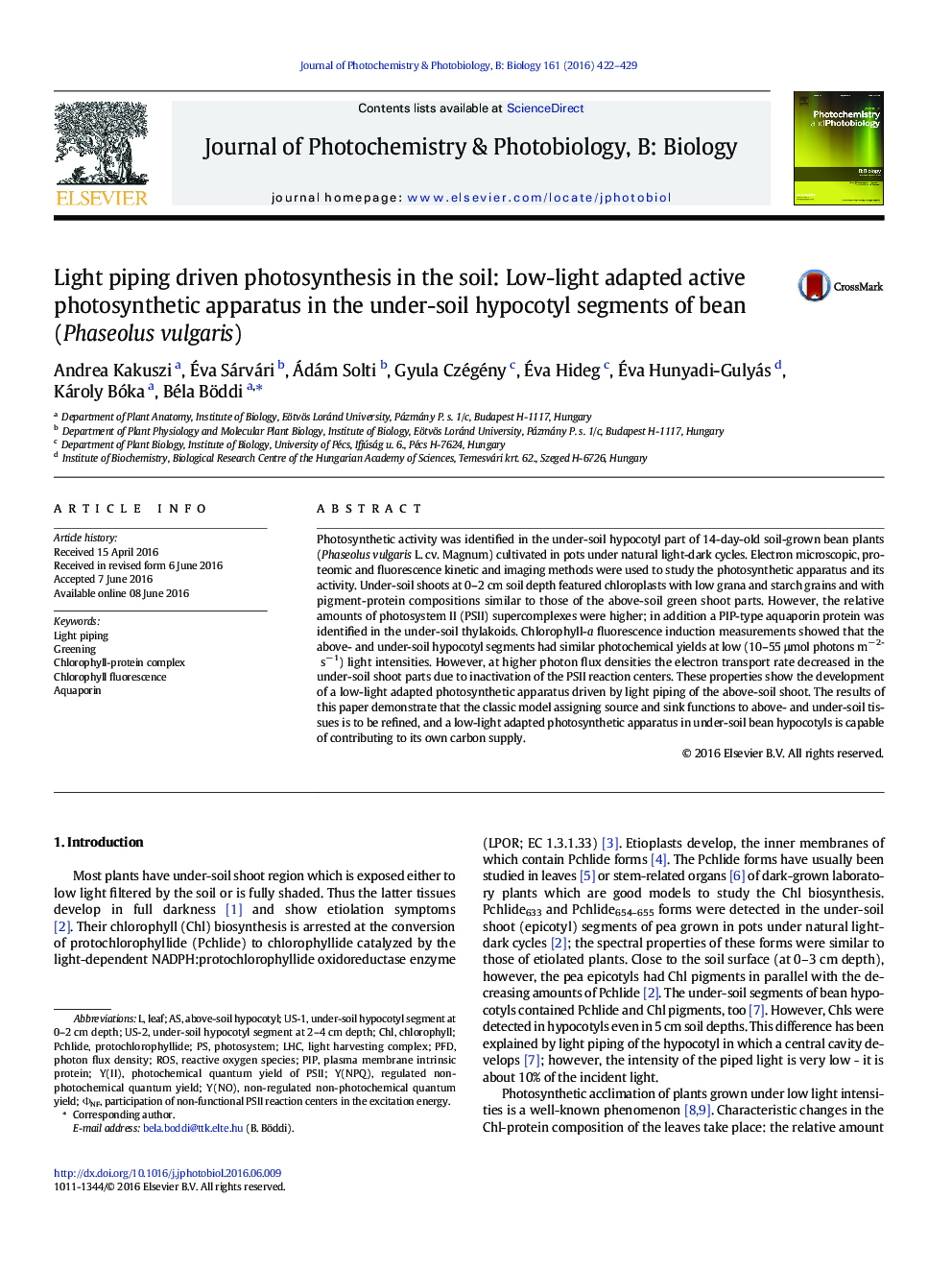| Article ID | Journal | Published Year | Pages | File Type |
|---|---|---|---|---|
| 6493707 | Journal of Photochemistry and Photobiology B: Biology | 2016 | 8 Pages |
Abstract
Photosynthetic activity was identified in the under-soil hypocotyl part of 14-day-old soil-grown bean plants (Phaseolus vulgaris L. cv. Magnum) cultivated in pots under natural light-dark cycles. Electron microscopic, proteomic and fluorescence kinetic and imaging methods were used to study the photosynthetic apparatus and its activity. Under-soil shoots at 0-2 cm soil depth featured chloroplasts with low grana and starch grains and with pigment-protein compositions similar to those of the above-soil green shoot parts. However, the relative amounts of photosystem II (PSII) supercomplexes were higher; in addition a PIP-type aquaporin protein was identified in the under-soil thylakoids. Chlorophyll-a fluorescence induction measurements showed that the above- and under-soil hypocotyl segments had similar photochemical yields at low (10-55 μmol photons mâ 2 sâ 1) light intensities. However, at higher photon flux densities the electron transport rate decreased in the under-soil shoot parts due to inactivation of the PSII reaction centers. These properties show the development of a low-light adapted photosynthetic apparatus driven by light piping of the above-soil shoot. The results of this paper demonstrate that the classic model assigning source and sink functions to above- and under-soil tissues is to be refined, and a low-light adapted photosynthetic apparatus in under-soil bean hypocotyls is capable of contributing to its own carbon supply.
Keywords
Related Topics
Physical Sciences and Engineering
Chemical Engineering
Bioengineering
Authors
Andrea Kakuszi, Ãva Sárvári, Ádám Solti, Gyula Czégény, Ãva Hideg, Ãva Hunyadi-Gulyás, Károly Bóka, Béla Böddi,
